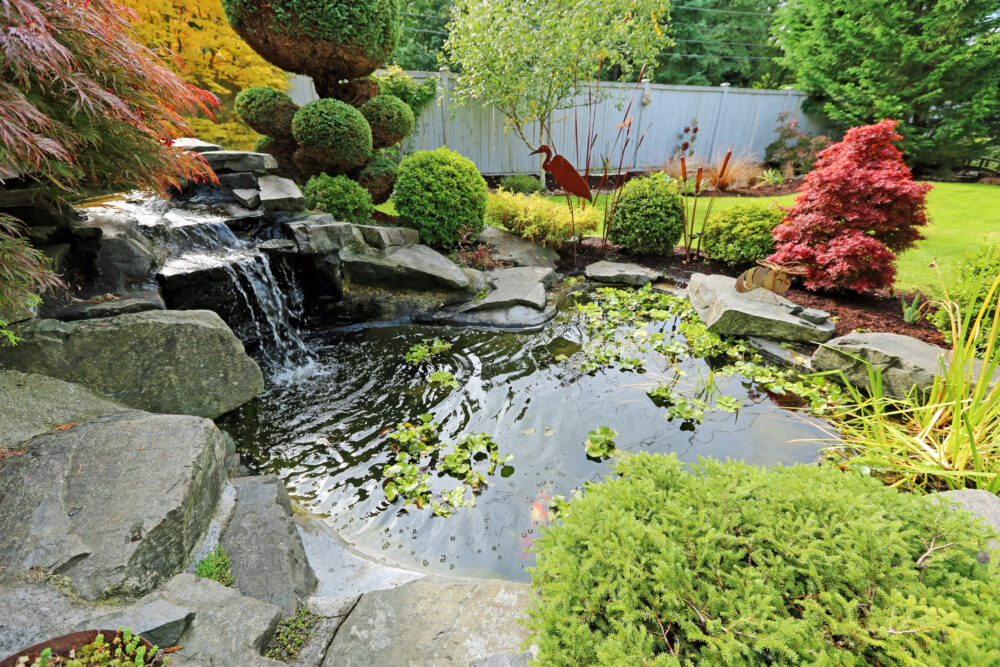Installing a Hard Shell Pond Liner
A rigid pond liner takes the guesswork out of creating a backyard pond, providing a preformed shape with shelves at suitable depths for submerged and marginal plants. This detailed guide from LowCo Gardeners will come in handy.
Select a level, sunny site near a water source. Level sites avoid runoff from higher elevations, and sunlight helps prevent water from becoming stagnant. Aquatic plants need five to six hours of sunlight per day to oxygenate the water, or three to four hours if the pond contains a waterfall or fountain. A nearby water source is convenient for filling your pond and topping it up. Contact utility services before starting to dig, to check the placement of ground lines and drains.

Digging and Leveling
Dig a hole that matches your liner’s shape and form but is 2 inches deeper and wider. Remove any large or jutting stones. Check that the hole is level by placing a piece of two-by-four across its width and putting a builders’ level on the two-by-four in the center. Repeat the action longways and diagonally across the hole. Remove or add dirt to the edge of the hole to adjust the height at the edges if required.
Inserting the Liner
Check that the hole matches the pond liner’s shape by putting the liner in and checking it sits firmly. Add or remove soil as needed. Remove the liner, then spread a 2-inch layer of sand across the bottom and over all the surfaces in the hole. Compact and smooth the sand with your hands. Place the liner in the hole again and check that it’s fully supported by sand. Add or remove sand as necessary until you achieve a firm, tight fit. Spread sand beneath the outer rim of the liner. Firm the sand so it fills any gaps and supports the liner rim.
Finishing Touches
Spread earth dug from the hole to create a 4-inch-high berm or place landscape stones around the outer edges of the pond. This protects the pond edge from damaging sunlight and prevents runoff from entering the pond. Fill the pond with water and let it sit for at least a week before adding plants or fish, to allow time for chlorine to evaporate. Grow marginal water plants at the edge of your pond to keep soil in place and provide a natural link between the pond and the surrounding garden.
For more help with your pond, call LowCo Gardeners today!
